A Shop Rental Agreement is a legally binding document that outlines the terms and conditions for renting a commercial shop space. It defines the roles, responsibilities, and obligations of…
continue reading
6+ Sample Warehouse Lease Agreement
-

Warehouse Lease Agreement Template
download now -
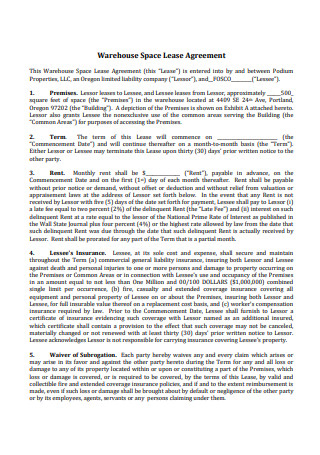
Warehouse Space Lease Agreement
download now -
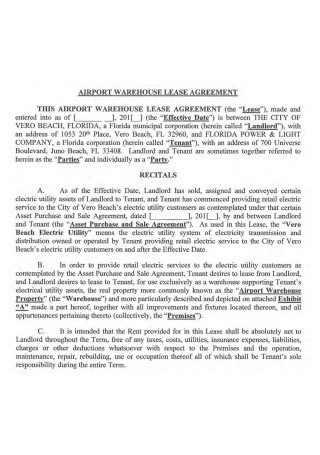
Airport Warehouse Lease Agreement
download now -
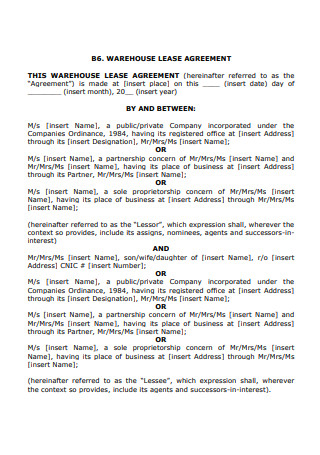
Warehouse Lease Agreement Example
download now -

Warehouse Lease Agreement in PDF
download now -
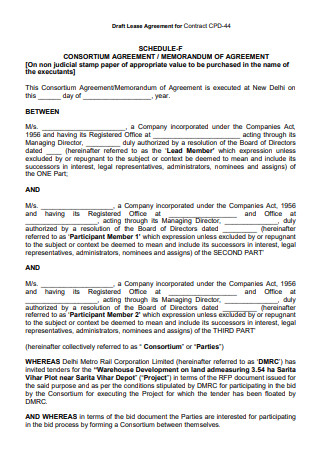
Draft Warehouse Lease Agreement
download now -
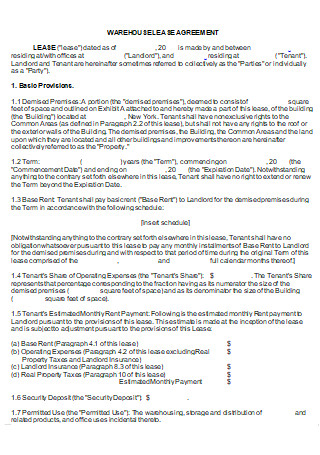
Warehouse Lease Agreement in DOC
download now
What is a Warehouse Lease Agreement?
A warehouse lease agreement is a document that has the concord of a landlord who owns a warehouse and a tenant who will rent the warehouse. Some manufacturers have no place for storage that they need a commercial space that can sustain their needs. They will enter a storage agreement that will enable them to use the warehouse of the landlord or lessor. Being a lessee means that manufacturers should adhere to the terms of the lease. Any sample contract has its own rules that the lessee should comply with. Storage rental is much needed by manufacturers because they have products that need a place to be stored. So this agreement is needed by entrepreneurs.
A warehouse lease agreement can also be referred to as the industrial warehouse lease agreement, commercial warehouse lease agreement, warehouse space lease agreement, or warehouse rental lease agreement. Unlike a residential lease, a warehouse lease includes a loading dock that can be used in parking large trucks. The space is defined by the footage. The agreement contains the description of the warehouse or how can it be apt for storing products. It can have the features of the warehouse like safety measures and environmental controls.
Through the warehouse lease agreement, the relationship of the two parties can be maintained and they can settle the main terms of the agreement. A negotiation can be done first to ensure that they can have the most out of the agreement. After negotiating, they can draft the contract using a warehouse lease agreement format. The agreement may last for years, for the common need of manufacturers requires years. The agreement can be one page agreement or more. But what is important is that both parties completely agreed with the terms of the agreement.
Elements of a Warehouse Lease Agreement
Maybe you are being choosy with warehouse agreement format or commercial rental agreement format. If you want the best in creating your warehouse rental agreement, you must ensure that you can put all its elements to make it complete. Read the following and know some of the elements of a warehouse lease agreement:
Tips on Warehouse Lease Agreement
Are you searching for a sample warehouse lease agreement or a free warehouse lease agreement template? Do you need it because you want some tips that you can apply to your agreement? You do not have to look further for tips. We can provide some tips for you. They are the following:
How to Make a Warehouse Lease Agreement
Do you need a warehouse lease agreement template or a warehouse lease agreement sample? Are you going to create a warehouse lease agreement? Well, know that we can provide some steps for you that you can follow. Read and consider the following:
-
Step 1: Know Your Space Needs
The first thing that you have to consider in leasing a warehouse is your need for space. How much space do you need? You need to calculate your space needs in terms of cubic and square footage. Consider all the factors that can affect your needs. One of these is your goods. How much space do you need for all your goods? Do you consider expanding your business in the future? Because if it is so, you may need a larger space. You should also consider your equipment. Will all of them fit in the warehouse that you are considering? Include your equipment in the calculation of the space that you need. Consider the warehouse space, manufacturing space, and flex space. When you are sure of the space that you need, you can start finding a particular warehouse that you can consider leasing.
-
Step 2: Locate Industrial Property
There are online databases that can help you in your search for a warehouse. You can search while you are in the comfort of your home or office. Select the type of property that will fit your needs. Compare properties using specific criteria. To decide, consider the price of the monthly rental and the size of the space that you need. You should also consider its location. The price of the warehouse depends on the price of the location. If it is in a better area, surely it is highly-priced. If you do not have enough budget for the best area, select a warehouse with a location that will suit your needs. Maybe you want to be close to your partners or your suppliers. Or you may want a location that is accessible. You should also consider the features of the warehouse. Check its loading docks, power supplies, onsite offices, and other things.
-
Step 3: Visit Properties
As you narrow down your search, you should visit the properties that you have chosen. Make appointments to see the properties in person. Some warehouses may just look good online so you need to check if they can truly give your needs. You should tell the agents about your need so that they can help you find what you are looking for. They can also find solutions to your problems in leasing. If you have zoning issues like having hazardous materials in manufacturing, the agents can help you. To make your visit more effective, you can create a spreadsheet where you can list the good things about the warehouses that you have visited. Through this, you can compare all of them. You can be able to choose the best among them.
-
Step 4: Lease Basics and Terms
A warehouse lease is more complicated than a residential lease. Renting a warehouse means that it should fit your business. You can choose to have a gross lease or a net lease. Through a gross lease, you will pay a high monthly rent but it covers costs for utilities, taxes, maintenance, and other things. If you want to focus on your business and do not have to worry about many things, this type of lease will be good for you. On the other hand, the net lease will make you pay the base rent. But you should pay the share for the utilities, maintenance, or taxes. Or you can even pay them in whole. One of the terms that you have to follow in the lease is by paying a security deposit. But if you will follow all the terms, you will have no problem with the lessor. After signing the agreement, you can have a warehouse that you can use for your manufacturing needs.
FAQs
How much is the lease for a warehouse?
The price of the lease of a warehouse depends on the location of the warehouse and its features. The average lease for a warehouse is $0.85 – $25 per square foot per month.
Where is the best city to have a warehouse?
Atlanta, Georgia is the best city where you can have your warehouse. It has the busiest airports in the world so you can be sure that you can have your supplies earlier and can deliver your products better.
If you are a new entrepreneur who entered the manufacturing business, one of the things that you need is a warehouse. Maybe you are new and do not have enough capital to own and make a warehouse for your business. You should know that there are many available warehouses around and you can have a warehouse lease agreement. Well, do you need a template for a warehouse lease agreement? This post has 6+ Warehouse Lease Agreement in PDF | MS Word. You can have one for free. Download now!

